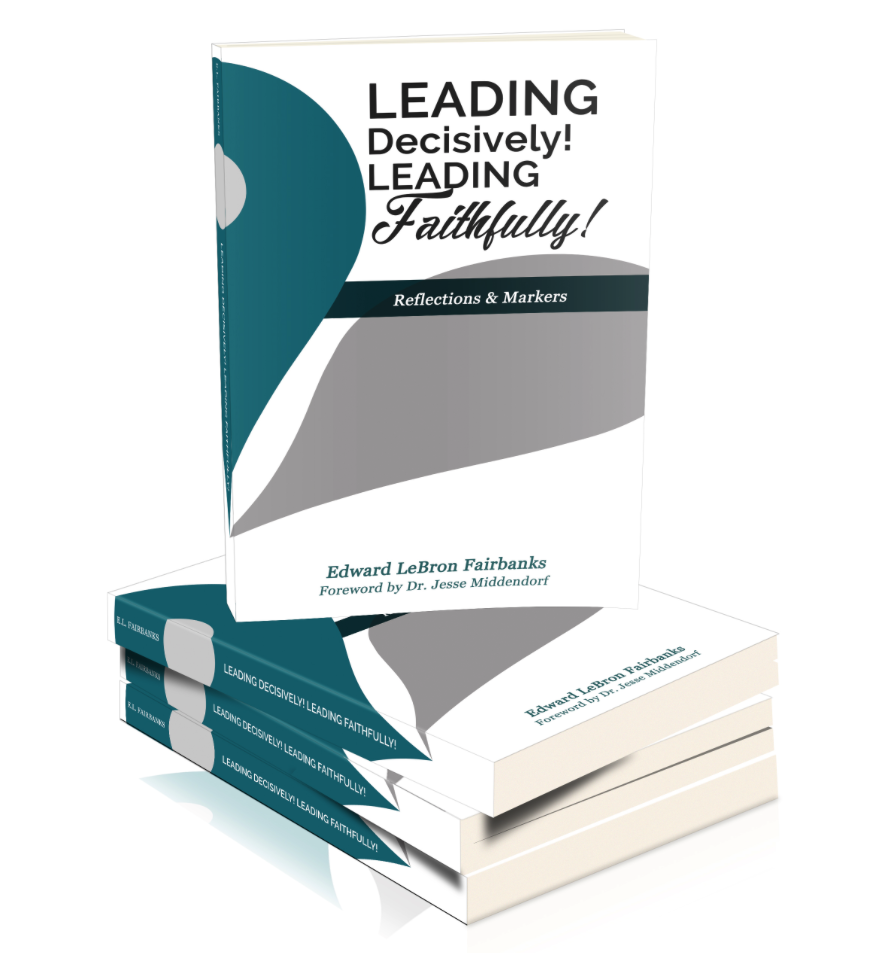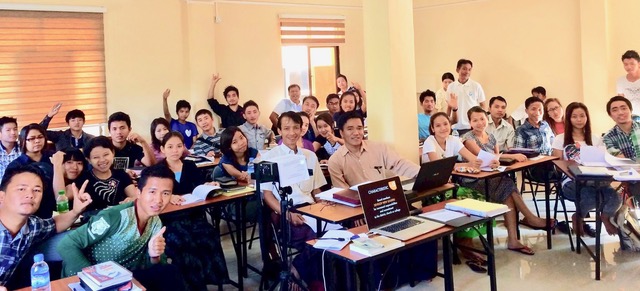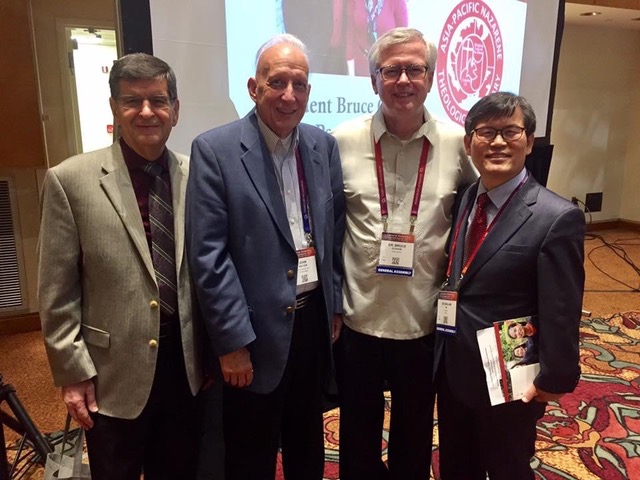The blog post below contains a draft of another chapter on the board development book by Drs. James Couchenour, Dwight Gunter,and myself. Twelve chapters have now been written. The book will be published in 2012 by Nazarene Publishing House.
I welcome your comments and suggestions for improving the chapter.
____________________________________________________________________________________________
“Role Models of Generosity and Stewardship”
One of the most memorable and profoundly moving experiences in ministry was my involvement in the Lausanne 2004 Conference on World Evangelism in Pattaya, Thailand. Participants were asked to join one of 30 “Issue Groups,” with each Issue Group assignedto a critical issue facing the church and its mission in the new century. Prior to the conference, I (LF) was asked to co-lead Issue Group #27, “Funding for Evangelism and Mission.” My colleague in leading the group was Dr. MacMillian Kiiru from Nairobi, Kenya. Dr. Charles Roost and I served as co-editors of the article reflecting the work of the group for a Lausanne book summarizing the work of the conference. The majority of the twenty-seven ministry leaders in our group represented several types of ministries and led ministries in various countries in what is commonly called “the developing world.” Together we addressed the “funding” subject given to us.
It was in those Thailand meetings that the word “generosity” came to mean much more than “bigness” of amounts of money given. Rather, from a biblical perspective, it refers to a quality of spirit and attitude reflected in both givers and receivers. Both donors and recipients must guard their attitude and spirit as they serve as role models of generosity and stewardship. Board members of colleges, local churches, and ministry organizations not only set examples of faithful and consistent giving to the organizations on whose boards they serve, they also reflect a quality of spirit and attitude of respect and gratitude toward the givers, donors, or tithers who sacrificially give small or large amounts of money to the Christian ministry Another “best practice” of strong and effective boards is that they also serve as role models of generosity and stewardship.
Let’s Review
Earlier in the book, we discussed the necessity of board members to focus on the mission, vision, and values of the organization, institution, or local church you serve. A mission statement is about the basic purposes of the organization. It is a statement about the organization’s reasons for existing.
Remember the theme of chapter three? The section focused on the importance of asking the right questions. Mission statements often grow out of discussions around questions referenced in the earlier chapter:
Who are we?
Where are we?
Where are we going?
How will we get there?
Why is it important to get there?
What makes us distinctive or unique?
The mission statement clarifies an organization’s primary intentions. An organization is a means to an end. It is not an end in itself. The organization serves a greater purpose than the organization itself. A mission statement will define the organization’s role, bring focus to activity, and eliminate ambiguity concerning its reason for being.
Vision, on the other hand, is a “see” and “hear” word. It suggests a future orientation, an image of what the organization might look like in, say, ten years. It suggests an end result, and connotes a standard of excellence.A vision statement is a mental image of a possible and desirable future state of the organization.
Values tell us how we expect to travel to where we want to go. It describes how we intend to operate as we pursue our vision. Governing values would include an understanding of the lines we will not cross, how we expect to regard the donors, tithers, the students the campus community, the congregation and how we want to behave toward one another.
The Challenge
God often chooses to use the resources of this world to accomplish His work. Human resources and financial resources seem to be those most significant in the work of the church. History proves that funding for evangelism and mission is very important for the work of the kingdom.
The funding of evangelism and mission has hosted both great achievements for the benefit of the kingdom and significant pain and economic abuse within the body of Christ. As was demonstrated in Christ’s ministry and the life of the early church, money is a God-given tool for catalyzing mission but when used without integrity and good stewardship it has the potential to create significant harm.
The challenges faced in the funding arena seem to fall into three categories:
1. Shortage of funds to accomplish reasonable goals.
2. Misuse of funds on the part of ministry personnel and organizations.
3.Distortion of biblical principles and standards in fund development.
The Current Scene In Mission Funding
The current environment in funding mission and vision is generally characterized by a vertical, top/down arrangement where the money from donors “trickles down” to the recipient organization or ministry.

This vertical model, because of its hierarchical nature, has created major problems within the body of Christ. The donor has been reduced to a “source” for funds. The ministry organization has been reduced to “operators” of fund raising schemes primarily related to organizational budgets. Missing in the model is the character that honors biblical principles for the effective use of God’s resources to accomplish His purposes. The top/down relationship within the body of Christ disfigures stewardship and cries out for redemption and transformation.
A New Model
What is required is acceptance of the proper theology of funding and subsequent practices that will point the church to fulfillment of the task of mission and vision while affirming the equality of all believers and unity within the body of Christ.
The challenges in funding evangelism in the current environment can be traced back to the lack of an adequate theological framework for the role stewards as they manage financial resources. In the absence of a comprehensive theology and a reflecting set of principles for financial resources, the world of non-profits has fallen prey to ineffective models and strategies characterized by the following:
1. Lack of a functional theology regarding fund development and resource management.
2. Lack of mutual understanding, effective strategies and clear funding models concerning the biblical relationship between giver and receiver.
3. An assumption of limited local resources available to the emerging church and the lack of effective leadership in the management of resources.
4. Education and training that is sufficient in stewardship and fund development at both ministry leadership training institutions and local congregations for funders in mission strategy for mission agency executives and their development staffs.
5. Attitudes of dependence on the part of receivers and co-dependence on the part of providers. The new model, strongly recommended by Lausanne Issue Group #27 “Funding Evangelism and Mission,” changes the way giving and receiving is perceived, approached and accomplished. It is recommended with the understanding that such a major paradigm shift will not be easily adopted.
This model, called the “Mutual Commitment” model, is horizontal in structure, placing all parties in the fund development effort on an equal plane. In this model, all believers enjoy an equal standing before the throne of Christ.

This new model can best be understood in the reorientation of five key concepts within giving and receiving: stewardship, relationship, accountability, dependency and the role of intermediaries, including the governance board of an organization, college, university, seminary, local congregation or not for profit ministry organization.Read more about the five key concepts in the new model in the chapter appendix in the back of the book.
Our relationship must never be defined by, nor become limited to, the ritual and discipline of tithing, the mechanisms of financial transfers. Relationship value reflects the Body of Christ, not some economic standard or potential
Implementing the “Mutual Commitment” Model
A new model, in and of itself, does not a change make.Theory without practice is empty … practice without theory is folly.
The ultimate question asked by the Lausanne Issue Group on “Funding Evangelism and the Mission” was, “how does the new model make funding the mission and vision more efficient and effective?”If the theological base for the new model is correct, as Board members and those who manage God’s resources here on earth mature in stewardship and expand the grace of giving, there will be ample resources for any “project” God desires to see accomplished.He is not short of funds … just short of mature stewards.Humanly, it may seem that His decision to trust His creation to channel His resources into “investments” that accomplish His goals is questionable.That plan, like all of creation, has suffered immensely from the impact of the entry of sin into His creation.Once His creatures became distorted in values and priorities, their use of His creation also suffered.If the management of resources can be redeemed, the use of those resources will be re-channeled into His priorities.
Pragmatically, the questions are as follows:“How does the local church board manage the tithes given, or the organization build a fund development program that accomplishes the “mutual benefit” design?” “How does the mature donor exercise the grace or gift of giving in such a way that the ministry is moved to the new model?”The crush of ministry budgets and the pressure of general funds war against the transitions necessary to reflect the characteristics of reciprocal blessings between donor and receiver.For decades the donor or “tither” has been seen as simply the supplier of funds.Furthermore, for decades donors have taken a rather passive attitude toward issues of ministry outside the consistent request for more funds.Out of excess comes that which meets the needs of those in ministry who have no excess.Consequently, there is no mutual growth relationship assumed or generated for the majority of donors other than that reflected in the level of financial participation.
Several steps should be considered as the school, church or Christian organization makes a commitment to building a mutually benefiting fund development and financial management program.
1. Mailing lists, those cold and impersonal lists of names and addresses may be categorized or stratified differently than by giving experience or potential.If there was a way to identify maturity of giving motivation or level of growth in the grace of giving, those categories would be much more conducive to knowing how best to communicate with mutual blessing than the size of the checkbook.Other categories, such as type of ministry that interests the donor or level of personal involvement with the ministry, would assist in communications more mutually beneficial than the emotive plea for funds.
2. Communications designed specifically for various members of the family may assist in inviting those other than the check-writer.Likewise, specific communications to various professional groupings may provide information useful for stimulating the involvement of those professionals in ministry.
3. Reducing the use of exploitive and emotionally manipulative stories and pictures, without sterilizing the message, may over a period of time, provide a more accurate picture of ministry than is generated by extreme direct mail. Such a pattern of printed material would help preserve the dignity of those funded in needy parts of the world.
4. Patterns of communication that include more personal interaction, group meetings, conferences, mission trips, etc. will elevate the tither or donor from “source of money” to “partner in ministry.”
5. Opportunity for tithers and donors to know the challenges as well as the blessings within a ministry will provide a foundation of reality for the donors as they give and pray.
6. Accurate reporting, rather than exaggerated numbers, will encourage respect for and identity with the normal challenges of ministry.A donor funding a “quick fix” to a massive problem will ultimately be disappointed and cynical about ministry.
7. While an organization, church or school is legally accountable to its governing board, a spirit of accountability to the faithful givers and its supporting family would encourage maturity in that family.This is not a simple task.With diverse backgrounds and levels of maturity in the supporting family, the process of being accountable becomes very complex.Yet, the organization that relates to its constituency in a comprehensive accountability pattern will develop strength in that “family.” When members of the supporting family assist in the design of accountability communication, the process becomes less threatening and more “joy-filled.”
8. While the emotive dimension of life opens the door to funding decisions, it is the cognitive that builds maturity in all dimensions of life. The information shared between tither or donor, the intermediary or board and receiver or recipient should be structured in such a way that it moves both giver and receiver to a higher level of trust relationship and cognitive connection.The donor needs to be prompted in stewardship growth and ministry awareness. The receiver should consistently refine efforts to both manage and report on the management of God’s resources extended to the ministry. Stagnating the donor at the emotive level of involvement is a misuse of the stewardship trust.
Conclusion
The Lausanne Issue Group on Funding the Mission recommended a radical shift in the perspective of ministry organizations, including local churches and Christian colleges toward funding principles.A fund development program, principled on biblical truths, has the potential of freeing God’s resources from the tyranny of natural human inclination.The issues of funding have more to do with stewards than with money … more to do with stewardship maturity than matching dollars to budget projections.The ultimate availability of funds to accomplish God’s Great Commission is not limited by quantity of resources, but by values and priorities within God’s stewards that distort His intentions for effective mobilization of His wealth.
As we work on ministry boards of governance, we steadfastly focus like a laser beam on the mission, vision and values of the organization, school, or local church. Remember, generosity” means much more than “bigness” of amounts of money given. Rather from a biblical perspective, it referred to a quality of spirit and attitude reflected in both givers and receivers. Both donors and recipients must guard their attitude and spirit as they serve as role models of generosity and stewardship.





